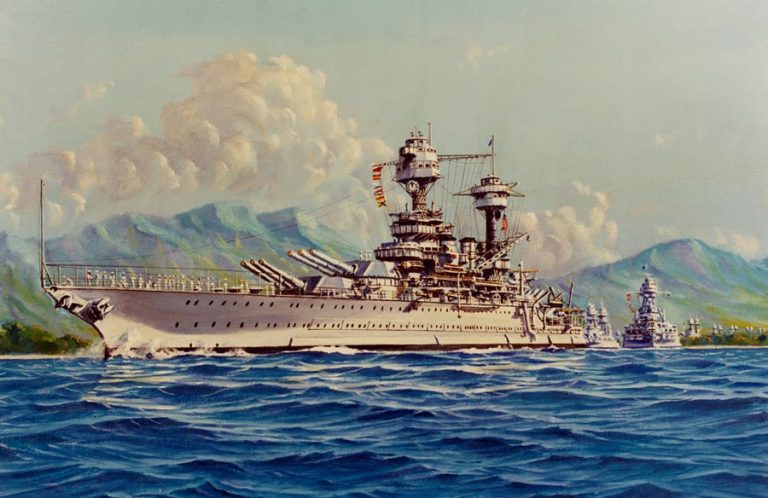Battleship USS Tennessee (BB-43)
Volunteer State Battlewagon Built in 1919, the USS Tennessee was one of two Tennessee Class battleships (see note at bottom), the other being the USS California. Her graceful cage masts and stylized clipper bow cast a distinctive silhouette, an elegant characteristic of the time that was shared by both the Tennessee and the Maryland class battleships. The USS Tennessee had an overall length of 624.5 feet, a beam of 97.3 feet, and a displacement of over 35,000 tons (full load). Known at that time as an electric-drive ship, her engines produced 28,600 HP and she ran at a service speed of 21 knots. Like all dreadnoughts, she was heavily armored and carried massive weaponry. Her armament included twelve 14-inch guns and four turrets. Moored in Pearl Harbor at the time of the 1941 attack, The Tennessee was struck by two bombs and tasked with dousing multiple fires. She managed to survive with little damage relative to other ships in the harbor, in spite of being surrounded by fires and wedged against mooring quays by the sinking USS West Virginia. After the attack it was necessary that the quays be partially dismantled in order to free her for emergency repairs. Chosen for modernization as part of a recovery program,, USS Tennessee underwent major modifications that changed her appearance dramatically. Gone were the graceful mast cages, along with the rest of her superstructure, and her girth was substantially widened by the addition of torpedo blisters. Upgraded armament included the latest anti-aircraft guns, and her new superstructure was compact, a design more suitable for the technology and weaponry contemporary to modern warfare at that time. She returned in May of 1943 and went on to serve with great distinction throughout the rest of WWII, earning a Navy Unit Commendation and 10 battle stars. Decommissioned in 1947, she became part of the ‘mothball fleet’. In 1959, deemed technologically beyond her usefulness, she was sold to the Bethlehem Steel Company and scrapped. In this painting the USS Tennessee is depicted in the mid-thirties, leading the US Fleet out of Pearl Harbor, followed by the Fleet Flagship, the USS Pennsylvania. Note: In the book Jane’s Fighting Ships (1931 edition) USS California and USS Texas are depicted as part of California-class ships. USS California was initially fitted out as a flagship, (Internal cabins were divided to provide extra rooms for the flag officer and staff) . However USS Tennessee was launched months before USS California and what was to have been the California-class became the Tennessee-class.
